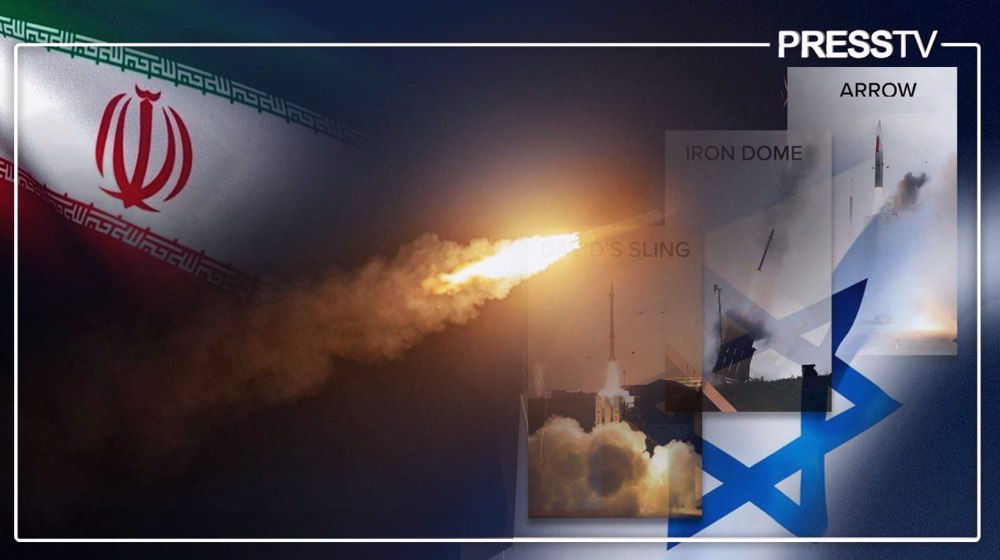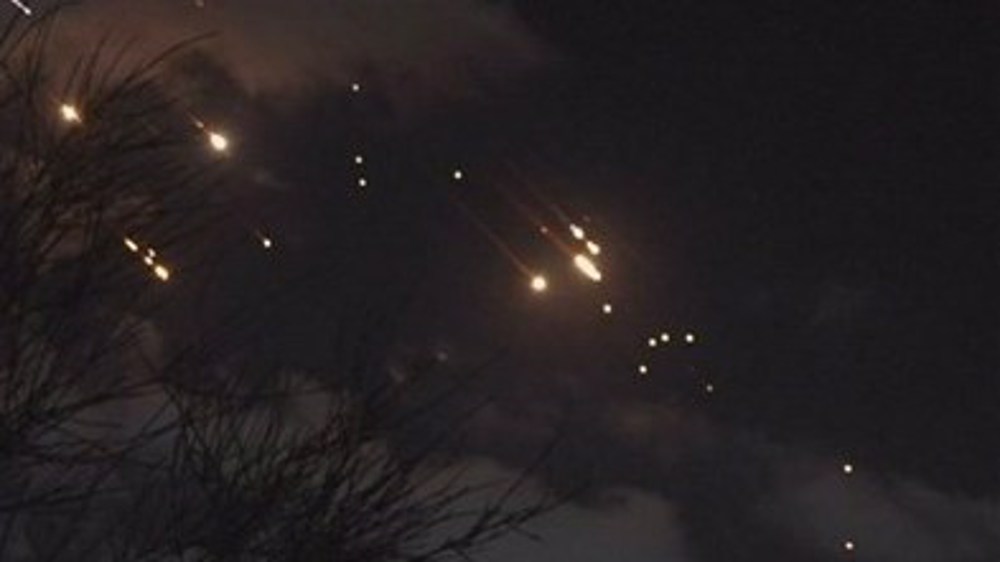Explainer: Why did Israeli air defense systems again fail to intercept Iranian missiles?
By Ivan Kesic
The successful military operation launched by the Iranian armed forces on Tuesday against the Israeli-occupied territories again demonstrated the inefficacy of Israeli air defense systems.
Iranian military officials did not specify the number of ballistic missiles that were fired directly at the Zionist entity, however, media reports put the number of missiles at more than 400.
According to a statement released by the Islamic Revolution Guard Corps (IRGC), almost 90 percent of missiles managed to penetrate through air defenses to hit the intended target.
Israeli regime sources claimed that Iran launched 180 ballistic missiles and that "a large number" or "the majority" were intercepted by air defense systems.
Some Israeli and Western media reports also claimed that 99 percent of missiles were intercepted.
Evidence in the form of verified videos circulating on social media showed that the interception was very little as missiles successfully landed on the ground, hitting the targets.
There was smoke and fire all around as sirens blared loudly across the occupied territories.
In Iran, private footage shared on social media platforms showed one salvo of missiles near Kermanshah, another salvo near Tabriz, and another salvo near Shiraz.
Hundreds of direct strikes were reported in the Israeli-occupied territories, many of them hitting the Nevatim Airbase, Tel Nof Airbase, Hatzerim Airbase and the Mossad headquarters in Tel Aviv.
Overall, the data of hundreds of ballistic missiles and 80-90 percent success rates almost perfectly match the IRGC sources and confirm that the Israeli regime is once again resorting to disinformation.
As with the April case, more than a hundred widely visible intercept explosion traces over the skies of Jordan, Syria and Iraq would be recorded in the early evening hours, while there is again virtually none.
To shoot down medium-range ballistic missiles, used in the Iranian strike, the Israeli regime uses long-range anti-ballistic systems such as Arrow and David's Sling that operate at a range of tens or hundreds of kilometers and very high altitudes.
Both systems proved extremely ineffective during Iran's retaliatory strike with missile salvos in April, as well as Yemen's single hypersonic missile attack on Tel Aviv in mid-September.
The case related to Nevatim Airbase is particularly intriguing, where nearly 30 warheads hit the target simultaneously within a matter of seconds, without any visible attempt of intercepting.
Some sources suggest that one of the direct hits on Tel Nof Airbase with visible secondary explosions was actually the Arrow battery with radar.
The US-Israeli joint development of the Arrow systems over the past 25 years cost billions of dollars and was previously touted as “99 effective,” which seems bizarre today.
Based on these pompous and obviously fabricated claims, Israel secured a $3.5 billion export contract with Germany last year, marking the largest military sale in its history.
All reliable data in the past year show that these air defense systems were developed to intercept outdated ballistic missiles and are not capable of dealing with salvoes of maneuvering missiles or even single hypersonic types.
In reporting the Iranian attack, the Israeli regime also used other propaganda tools, such as emphasizing the claims that there were no deaths, although the Iranian targets were obviously military installations, not civilians.
Israeli military sources also are yet to publish any foolproof technical evidence of Iranian ballistic missiles being intercepted, basing their claims on rhetoric.
Importantly, last year Press TV website exposed the fallacy of the so-called "over 90 percent success rate" of Israel's air defense systems, establishing why such claims were trumpeted for lucrative exports and psychological calming of its own settler population.

‘Deterrent and defensive’: Armed Forces say IRGC vanquishes any enemy at any level

Iranian Armed Forces achieve ‘most sophisticated’ defense technology: Military official

Iran Army possesses ‘ultra-secret, AI-powered’ weapons; enemy has no chance to survive: Cmdr.
VIDEO | Exclusive: Yemeni eyewitnesses say US warplanes targeted civilians in their homes
VIDEO | Press TV's news headlines
‘Guardians of Revolution’: IRGC warns enemies it is at ‘peak of all-out readiness’
Microsoft collaboration in Gaza genocide
VIDEO | Senior Hamas-allied leader killed in Israeli drone strike south of Beirut
Syria arrests Islamic Jihad officials after US ties sanctions relief to ban on Palestinian groups
Gaza children dying not only from bombs, but hunger: Health Ministry
Israeli strikes kill nearly 10 Gazans, including two children, in new aggression














 This makes it easy to access the Press TV website
This makes it easy to access the Press TV website